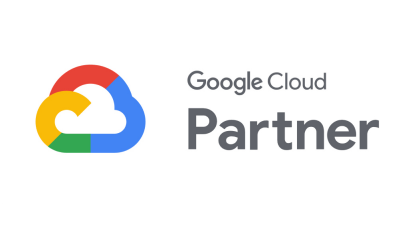Due to many factors, more and more businesses are moving to virtual offices and the remote work model, the demand for cloud software is growing. However, what can you do if you already have on-premises software that fully satisfies you? Of course, cloud migration is the answer! But any other tech process is associated with some risks and possible issues. Nevertheless, these risks shouldn’t be a reason for you to reject the idea of moving to the cloud. On the contrary, studying cloud migration challenges beforehand is as reasonable as learning possible ways to get ready for them to avoid any adverse effects.
Thanks to the experience, our team works with legacy software and cloud solutions. As a result, we’ve managed to detect the most widely-spread risks in cloud migration and find out the approaches to avoid them or at least reduce their impact on your business.
List of the Key Cloud Migration Challenges
Lack of a well-developed cloud migration strategy
One of the most popular cloud migration problems that any company, regardless of its size and type, can face is when there is no clear understanding of how everything should be organized and executed.
A migration strategy is some kind of roadmap that describes the whole process of moving your software to the cloud environment. And it should be adequately elaborated.
How to overcome this challenge: It can be challenging for a person without a solid technical background to understand which strategy can be the most feasible in each case. That’s why we recommend consulting with tech experts before making the decision. For example, it’s crucial to decide whether you will migrate all software or only its part, whether you will opt for only one cloud provider, or whether you want to use multiple platforms simultaneously.
Specialists can analyze your software infrastructure's current state, business goals, and expectations and are ready to offer the strategy that will satisfy your requirements better than others. The correctly chosen strategy will ensure seamless migration and effectively organized business operations.

We’ve explained the peculiarities of three major cloud platforms in one of our posts.
The complexity of the legacy software infrastructure
The more complex IT architecture you have, the more cloud migration risks can appear. As you can understand, it is always easier to migrate a small, simple app than a huge system.
How to overcome this challenge: At first glance, it may seem that nothing can be done if you have a complex software system, and the only thing you can do is get prepared for all the possible challenges. But it isn’t true. You can always mitigate the risks.And the best idea that you can use in this case is to find a team with rich expertise in legacy software modernization. They can help you audit the system and introduce all necessary changes before the migration. It can also help reduce tech debt and detect independent parts of your system that can be migrated and kept separately.
Data loss
Due to many factors, when developers choose a strong strategy, the migration process may lead to incomplete data transfer or file damage. What else can lead to data loss? But you should be ready to face such cases.
How to overcome this challenge: To deal with these issues, you should have a backup. Then you can restore all your data and find the missing files. If you back up your legacy system, you will save the money and time spent on generating new files and data. While planning a cloud migration, it will be sensible to analyze the offerings of cloud platform providers. Some of them offer reasonably priced storage services that can be used for data backing up.
Latency issues
The increased latency is one of the issues that can be underestimated at the step of the cloud migration risk assessment. After you move your apps, services, and databases to the cloud, you may notice that it takes more time to access them. And if, in some cases, the increased time needed for getting a response is not a severe problem, there are apps where even a 2-second delay can be a disaster. In addition, extra latency may result in lower efficiency of your business processes and damage your company’s reputation and client satisfaction.
How to overcome this challenge: To avoid such issues, you need to make sure that you clearly understand the reasons for them. For example, the issue can be in misconfigured Quality of Service (QoS) or in a huge physical distance between servers and devices that send requests and wait for responses.
For dealing with this problem, we recommend applying one of the following methods:
- Network optimization and localization
- Multicloud connectivity
- Traffic flow segmentation
- Non-essential traffic offload
- Usage of external ecosystems for data exchange.
Not enough control of visibility
It is pretty natural that when you use on-premises servers and storage, you can fully control the performance of your data centers, systems, and apps. But when you start using public cloud services, and some part of your responsibilities move to your service provider, you lose control over your data and software. It becomes much more difficult for you to track the current performance of your apps in the cloud environment.
How to overcome this challenge: Even though this issue remains one of the risks of cloud migration, nowadays, you can find a lot of efficient tools that you can use for app and system performance tracking. These tools offered either by cloud providers or 3-party vendors will allow you to monitor the app's functioning easily and access powerful analytics. Moreover, you can also set up notifications and reactions in case of a particular threat and alert detection.
Security issues
Every company has sensitive data, which is a key to ensuring your business's success. And the process of transferring these data to the cloud is always associated with different compliance and security violations. The factors that can threaten your data security are hacker attacks, misconfigured servers, insecure APIs, server errors, and many others.
How to overcome this challenge: Different approaches can help you ensure your sensitive data is secure. We recommend consulting with your specialists who will conduct migration on the questions related to the measures to increase the data protection depending on the type of your software and the chosen cloud platform. Below you can find just a couple of ideas:
- Use pre-built security features offered by cloud providers
- Activate multi-factor authentication
- Encrypt data assets
- Use a Firewall
- Introduce user access policies
- Organize your workloads in such a way that they stay isolated (it will help to reduce damage in case any attach occurs).
High cloud migration costs
High (or higher-than-expected) expenses can result from a wrongly chosen migration strategy, latency issues, lack of experienced specialists, the necessity to transfer huge volumes of data to the cloud, poor prioritizing of migration tasks, etc. So let’s admit: nobody is protected from these risks, but you still can do your best to keep your expenses within the set budget.
How to overcome this challenge: The essential thing that will help you is proper pre-migration assessment and planning, and cloud cost optimization. The cost optimization may include removing unused items, reviewing resources usage, re-sizing the necessary data, etc.
Vendor lock-in
It can often happen that with the flow of time when your business is growing and scaling, you start feeling that your existing cloud platform provider doesn't meet your requirements anymore. For example, you need more interoperability or flexibility that your vendor can’t offer you, or it is becoming costly to start using new services provided by this vendor. As a result, you may be forced to pay more than it was expected initially (which may, in its turn, have a severe impact on your budget), or you may start noticing that your company is using services that do not let it meet its business goals.
How to overcome this challenge: The best mitigation of this risk is using hybrid services offered by different vendors rather than relying only on one service provider that can let you down. Today more and more businesses have started using the multi-cloud approach to “spread the responsibility” between different vendors and protect themselves from the risks of using only one cloud platform (Yes, that’s something like not putting all your eggs in one basket.).
Our team with rich expertise is always at your disposal. Contact us to discuss what we can offer you.
Wrapping Up
Though these risks may look scary for any company planning a cloud migration, believe us, all of them can be easily minimized. Their effect can be seamlessly mitigated if you have a professional in-house development team or a reliable IT partner that will manage to conduct all the processes. Today, thanks to outsourcing, you have a fantastic chance to access the widest pool of experts from all over the world.
If you want to learn more about the peculiarities and strategies of cloud migration, you can read one of our previously published articles on this topic. We shared our expertise in this field and explained in what situations different approaches can be suitable and what benefits they will provide to your business.
If you have fears related to cloud migration, do not hesitate to share them with us. Our seasoned developers are ready to analyze your case and help you overcome difficulties. A wide range of successful projects is proof of professionalism. Feel free to contact us!






